University Criminal Law 2: A Deep Dive into the Direct Effect Doctrine
VerifiedAdded on 2022/11/14
|5
|828
|62
Essay
AI Summary
This essay provides a comprehensive analysis of the Direct Effect Doctrine in EU Law. It begins by defining the doctrine, which allows individuals and businesses to enforce certain EU law provisions in national courts. The essay traces the doctrine's origins to the Van Gend en Loos case and outlines the three conditions established by the Court of Justice of the European Union (CJEU) for proving direct effect. It further explores the application of the doctrine to various legal instruments, including treaty articles, regulations, decisions, and directives, supported by landmark case laws such as Van Duyn v Home Office and Marshall v Southampton. The essay emphasizes the evolving nature of EU law and the doctrine's significance in shaping the relationship between EU law and national legal systems. The document concludes by summarizing the essence of the Direct Effect Doctrine, highlighting its ability to confer rights on individuals, which the courts of the EU member states must recognize and enforce.
1 out of 5
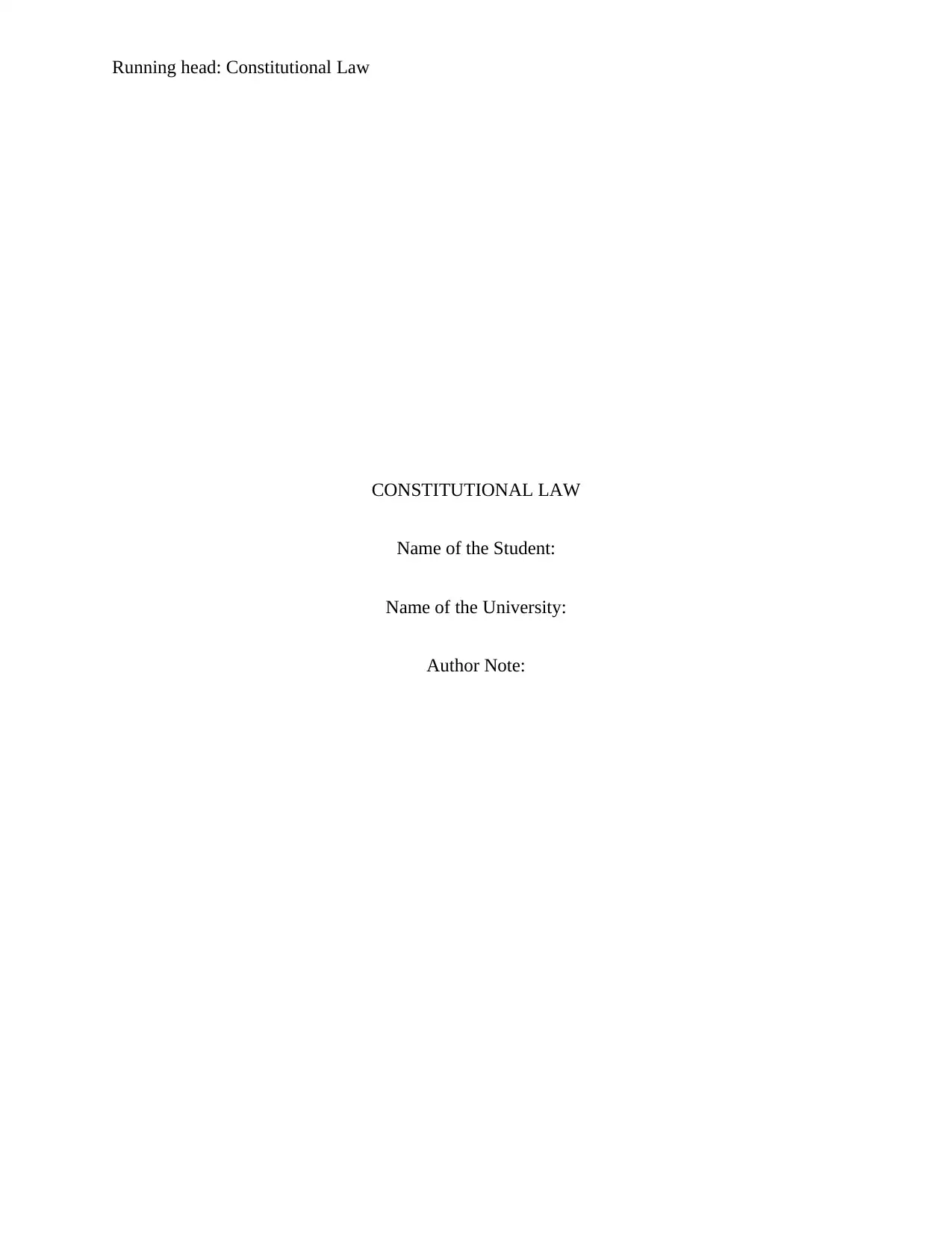
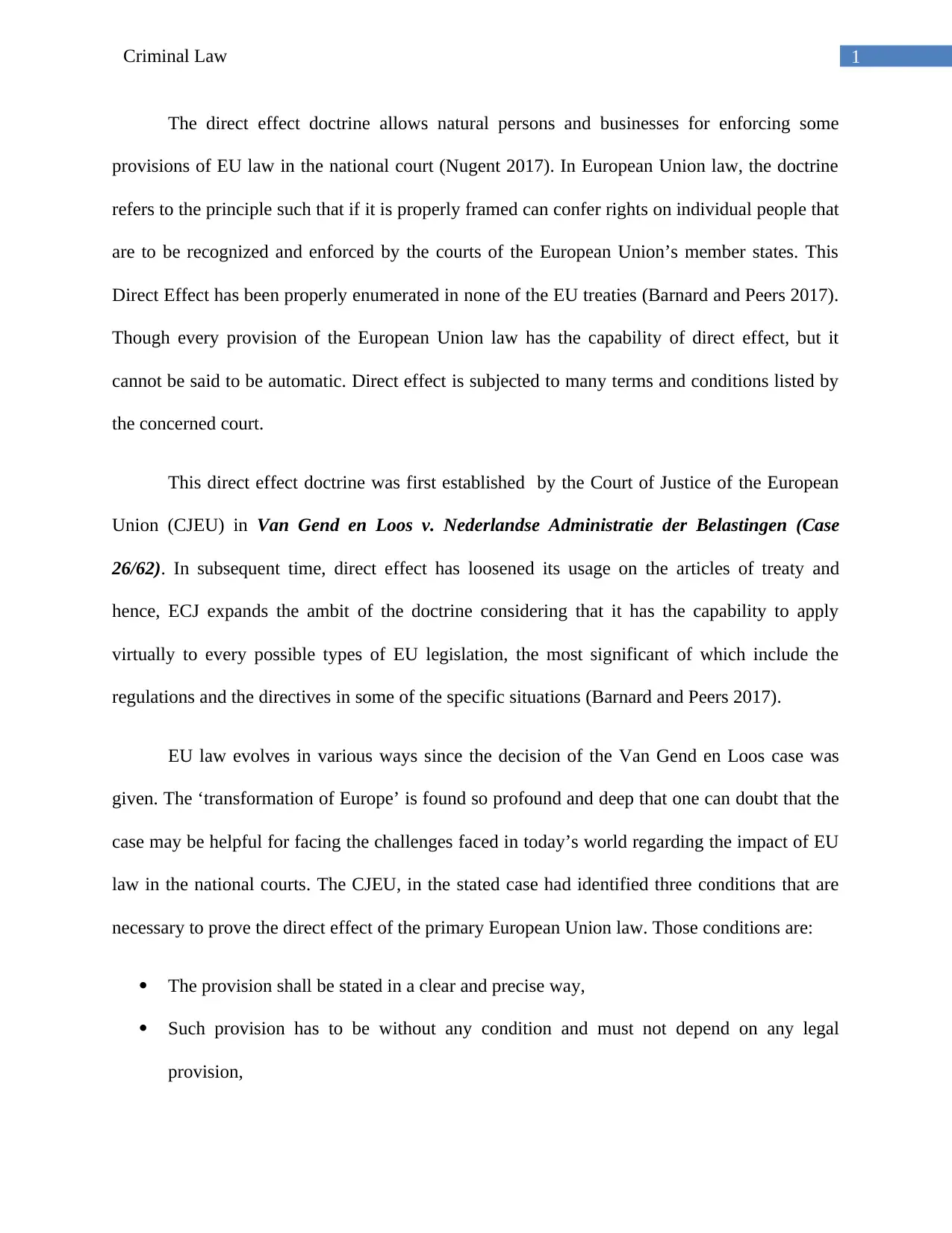
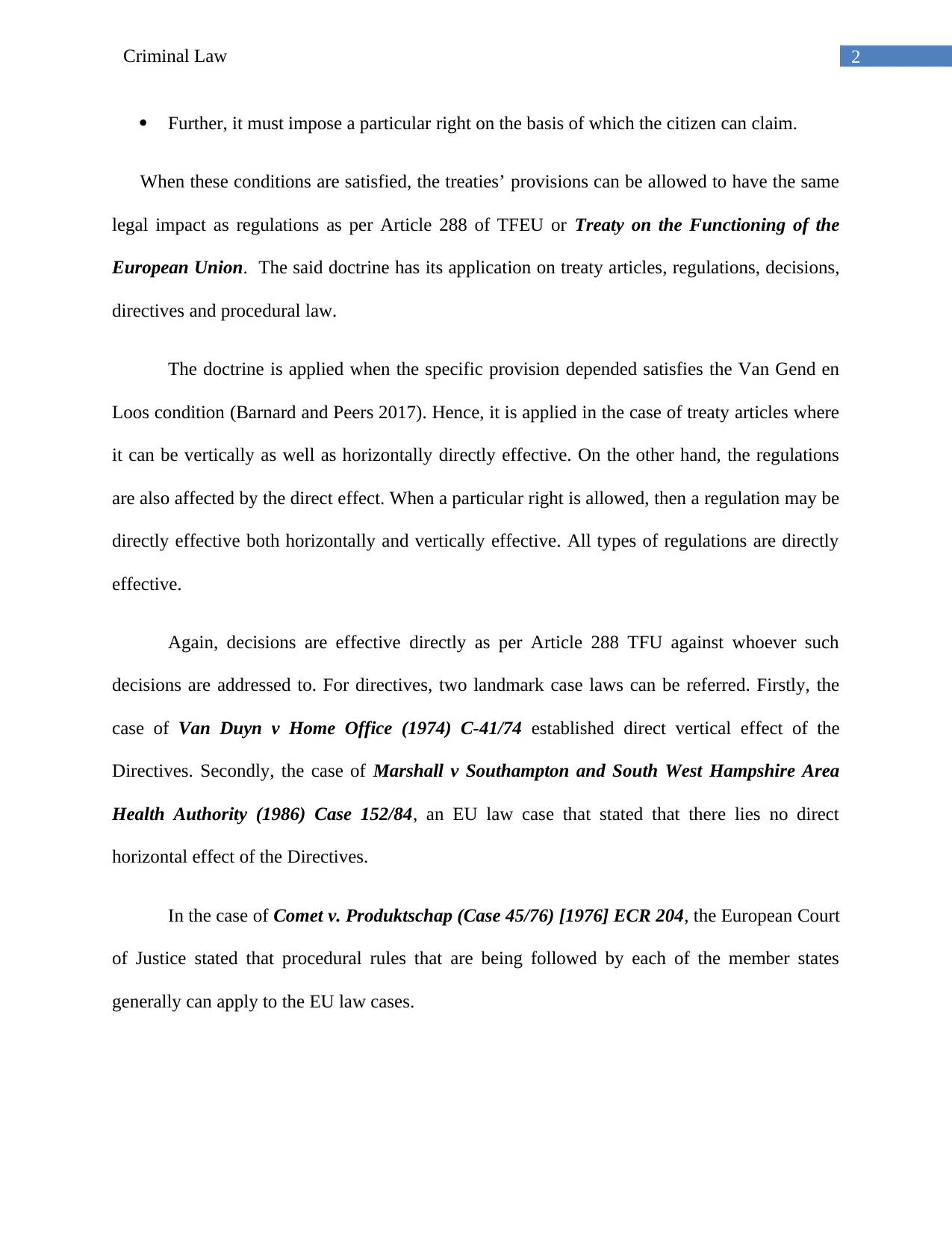

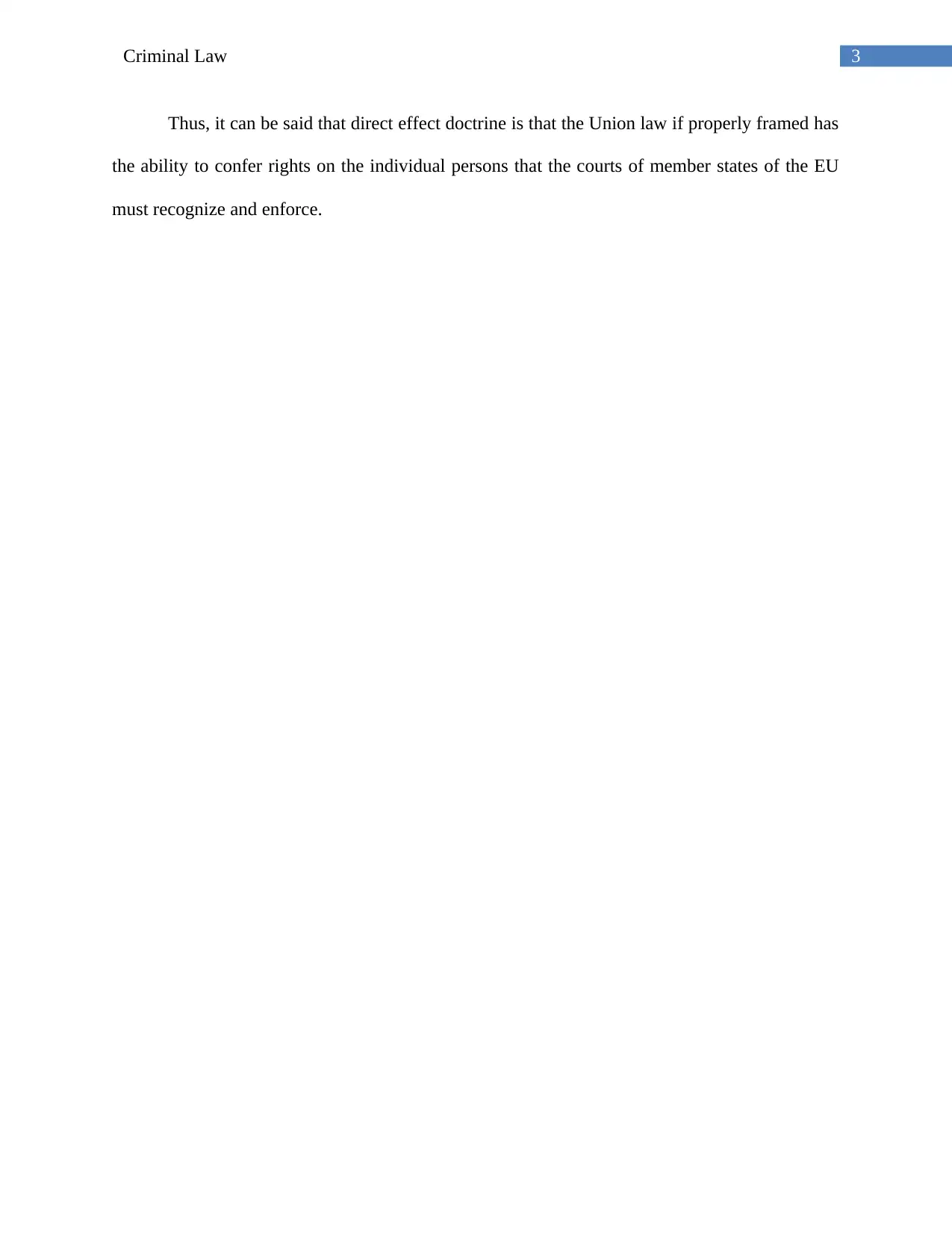
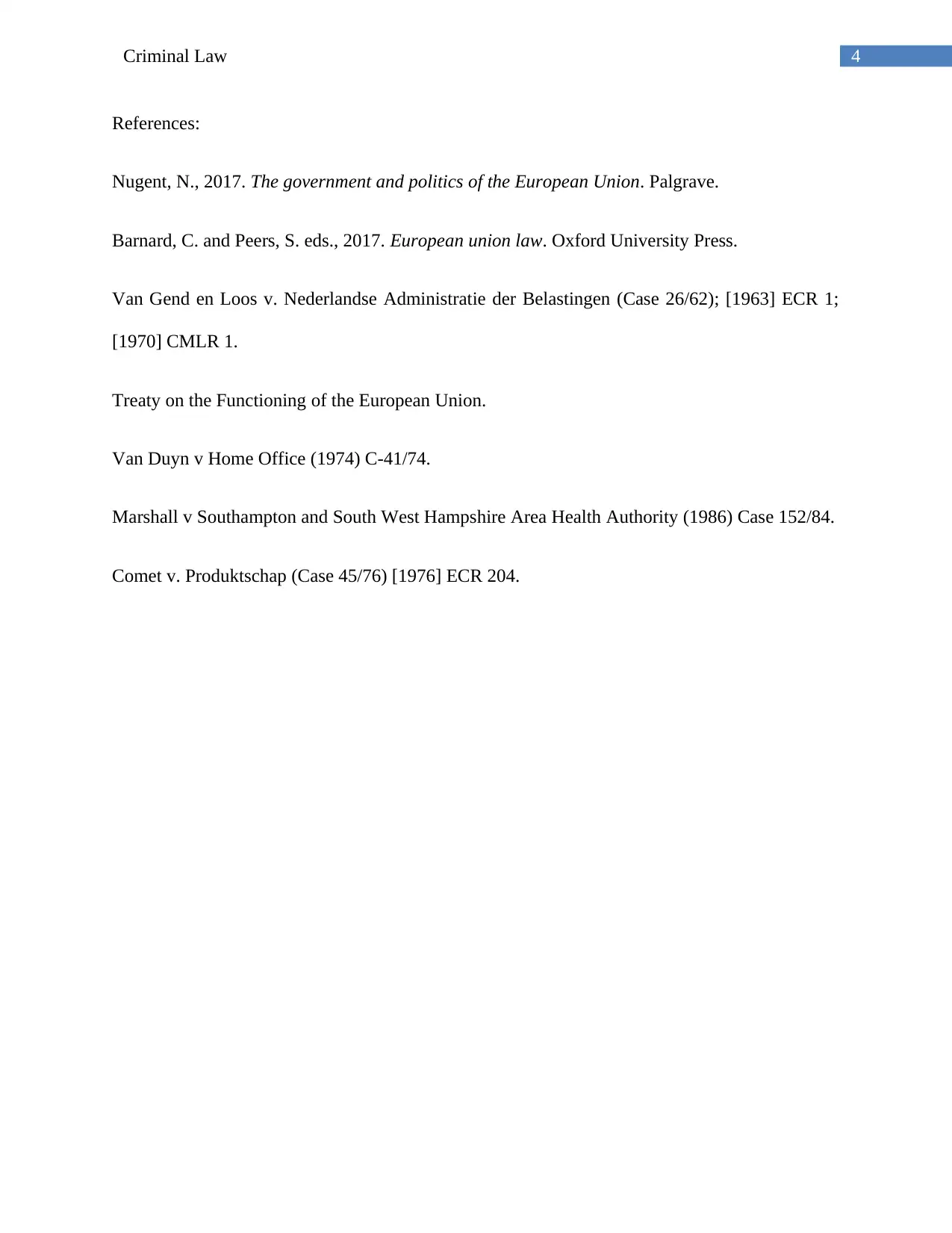






![[object Object]](/_next/static/media/star-bottom.7253800d.svg)